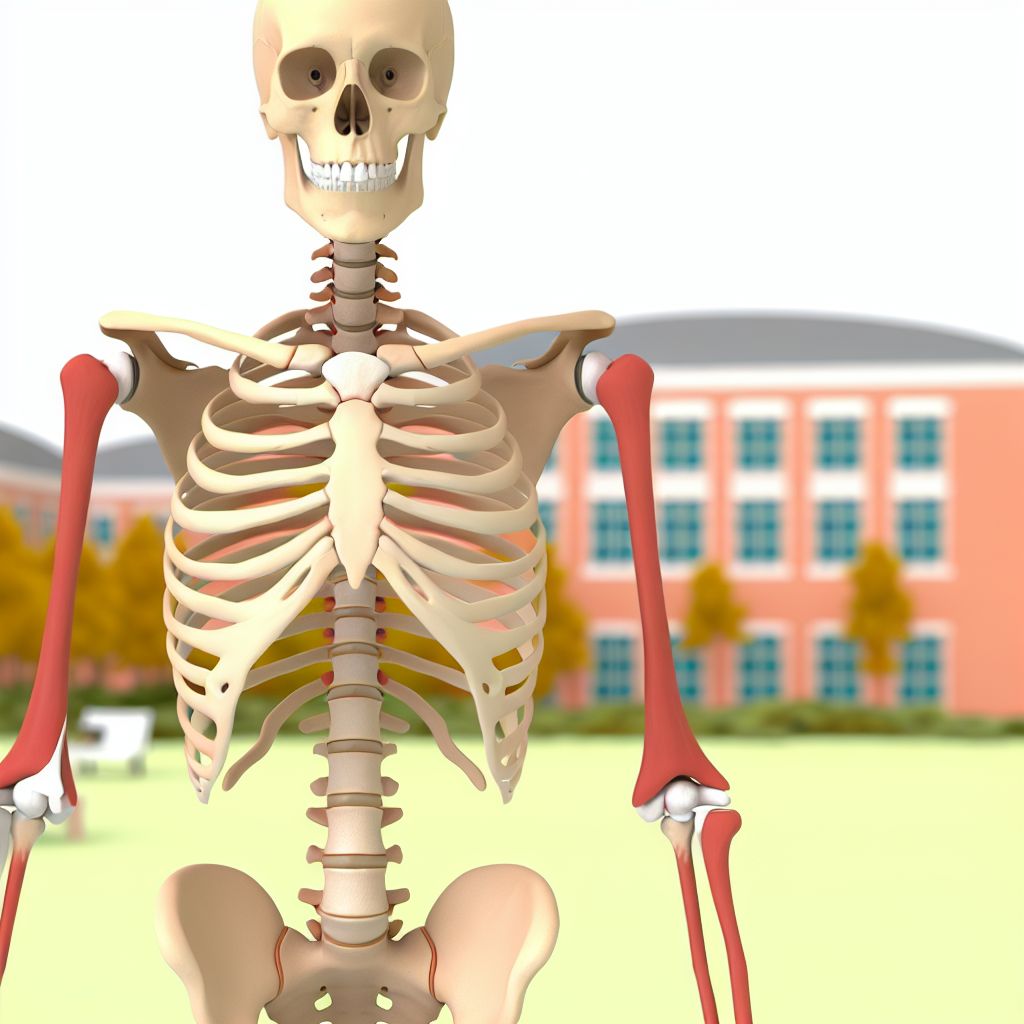Deutsch: Appendikuläres Skelett / Español: Esqueleto Apendicular / Português: Esqueleto Apendicular / Français: Squelette Appendiculaire / Italiano: Scheletro Appendicolare
Appendicular Skeleton in the fitness context refers to the part of the skeleton that includes the bones of the upper and lower limbs and the skeletal structures that anchor the limbs to the Axial Skeleton (such as the pelvic girdle and shoulder girdle). This division of the skeleton is crucial for facilitating movement and supporting physical activity, playing a key role in all forms of exercise from walking to weightlifting.
Description

The appendicular skeleton consists of 126 bones in the human body and is primarily involved in movement and physical manipulation of the environment. It includes the bones of the arms, hands, legs, feet, as well as the shoulders and hips, which act as points of Articulation and attachment for various muscles. The mobility and functionality of the appendicular skeleton are essential for performance in sports and physical activities, influencing everything from running speed to the ability to lift weights.
Application Areas
Appendicular Skeleton plays a central role in many aspects of fitness:
- Mobility and Stability: The bones and joints in the appendicular skeleton allow for complex movements while providing stability needed for various actions in sports and daily life.
- Endurance and Strength: Activities that build muscular strength and endurance often involve movements that stress the appendicular skeleton, highlighting its importance in physical fitness regimes.
- Coordination and Agility: The ability to coordinate movements smoothly and efficiently during physical activities is supported by the appendicular skeleton's structure and function.
- Load Bearing: When engaging in weight-bearing exercises, the appendicular skeleton structures bear the load and help distribute weight evenly.
Well-Known Examples
- squats and Lunges: These exercises involve the pelvic bones and femur, which are part of the appendicular skeleton, demonstrating the skeleton’s role in providing support and stability during lower body workouts.
- Bicep Curls and Push-ups: These target the upper limbs, specifically using the bones of the arms and shoulders to facilitate movement against resistance.
- Dance and Gymnastics: Activities that require a high degree of coordination and flexibility heavily rely on the appendicular skeleton.
Treatment and Risks
Effective training and care for the appendicular skeleton involve several considerations:
- Regular Exercise: Maintaining Bone health and joint mobility through regular, varied exercises that stress different parts of the appendicular skeleton.
- Injury Prevention: Proper techniques and safety measures should be practiced to avoid overuse injuries, fractures, or dislocations, particularly in high-impact sports.
- Nutrition: Adequate nutrition, including sufficient calcium and vitamin D intake, is crucial for maintaining strong bones and joints.
- Rehabilitation: In the event of injuries, specialized exercises and therapies aimed at specific parts of the appendicular skeleton can aid in recovery and prevent further injury.
Similar Terms
- Axial Skeleton: Comprises the central core of the skeleton, including the skull, spine, and rib cage, in contrast to the appendicular part which is designed for movement.
- Musculoskeletal System: Encompasses both the muscular and skeletal systems of the body, highlighting the interaction between muscles and bones.
Summary
In the fitness context, the appendicular skeleton is vital for enabling a wide range of physical activities that involve movement, coordination, and strength. It supports mobility in the limbs and plays a crucial role in both everyday and athletic movements. Proper understanding and training can enhance functional performance and help maintain overall musculoskeletal health.
--
Related Articles to the term 'Appendicular Skeleton' | |
| 'Diarthrosis' | ■■■■■■■■■■ |
| Diarthrosis in the fitness context refers to a type of joint, also known as a synovial joint, which is . . . Read More | |
| 'Thigh bone' | ■■■■■■■■■■ |
| Thigh bone: Thigh Bone (femur) is the longest and strongest bone in the human body. In the fitness context, . . . Read More | |
| 'Clavicle' | ■■■■■■■ |
| Clavicle in the Fitness context refers to the long, slender Bone connecting the sternum (Breastbone) . . . Read More | |
| 'Strength training' | ■■■■■■ |
| Strength training in the context of fitness refers to a type of physical exercise specializing in the . . . Read More | |
| 'Humerus' | ■■■■■ |
| Humerus in the fitness context refers to the long Bone in the upper arm that extends from the shoulder . . . Read More | |
| 'Femur' | ■■■■■ |
| Femur, commonly known as the thigh bone, is the longest and strongest Bone in the human body, extending . . . Read More | |
| 'Pelvic girdle' | ■■■■■ |
| Pelvic girdle: The pelvic girdle is the bony structure located in the lower part of the trunk, connecting . . . Read More | |
| 'Diarthrodial Joint' | ■■■■ |
| Diarthrodial Joint in the fitness context refers to a type of joint that is also known as a synovial . . . Read More | |
| 'Upper arm bone' | ■■■ |
| Upper arm bone: Upper arm Bone in the Fitness context refers to the humerus, the long bone that extends . . . Read More | |
| 'Leg strength' | ■■■ |
| Leg strength in the fitness context refers to the power and endurance of the muscles in the lower body, . . . Read More | |
